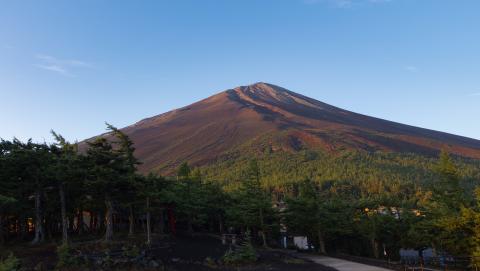Main content starts here.
This time of year (late January), you will start to see a certain set of items lining the shelves at stores in Japan: hand-rolled sushi, roasted soy beans, and demon masks. Before the Valentine’s Day chocolate hits the shelves, there is an important holiday in Japan that pays tribute to Italy’s “Saint Valentine.”

▲Setsubun at Kuonji Temple (Minobu Town)
Setsubun is bean-throwing event in Japan, celebrated at local festivals and in most Japanese homes. Today, we went out to join in on the festivities at Kuonji Temple in Minobu, Yamanashi.
According to the old Japanese lunar calendar, February 3rd marks the day before the beginning of spring, and in fact, its name literally translates as “seasonal division.” Kuonji Temple, and other Japanese temples and shrines, typically hold their Setsubun festival every year on this day.
To people from countries outside of Japan, it may seem that Japan is jumping the gun a bit by celebrating spring in early February. But early signs of spring can already be seen in Yamanashi, just look at this small cherry blossom (yamazakura variety) we found doing its best to bloom.

But what exactly goes on during the Setsubun Celebration?

At Kuonji Temple, visitors first gather in the main temple to watch honored guests get introduced, such as famous athletes or influential politicians. Then, an impressive Buddhist incantation ceremony is carried out, echoing all throughout the halls of the temple.
For the main events, everyone moves outside.
You might notice something strange lurking in the crowds… Green and red beasts with horns, sneak up behind young children, roaring to scare them—making for some truly great photos.

According to beliefs behind the festival, the “throwing of beans” is supposed to drive away bad luck and demons, which are called “oni” in Japanese. In the 13th century, during the earlier days of Setsubun, sardine heads were used to drive away bad luck, and is still practiced in some parts of Japan today. I could imagine this method is a bit stinkier…
When celebrated at home, the father takes the role of the demon, and dresses up to scare the children. The kids can then have fun throwing roasted soybeans at their “demon dad” to drive them away, while everyone shouts “Oni wa Soto, Fuku wa Uchi!” (demons out, luck in!).


▲This year’s big-named bean-throwers
At shrines and temples, it’s done a bit differently. The bean-throwing, called “mame-maki,” is usually entrusted to the big-wigs. At Kuonji Temple, heads from the Yamanashi Prefectural Government, councilpersons, Opera groups, and even the famous Japanese-Brazillian sumo wrestler, Kaisei Ichiro, were among the many invited to be the bean-throwers for this year.
The big-named bean-throwers all stood on a red and white platform, about five meters off the ground, with large boxes filled with Mt. Minobu’s very own “luck beans” wrapped in triangular, paper packages. Beneath them, crowds of young children, parents, and even the elderly eagerly awaited, hoping to have a little bit of luck tossed their way, by these people who seem to be overflowing with it.
As an American, the closest thing I could compare it to would be Black Friday. As crazy as it was, it ended up being super fun, and something you should try at least once in your lifetime.

▲Kuonji Temple’s mascot character (Minobu Town)
More Info
Minobu Town Events website:
https://www.town.minobu.lg.jp/event/
Published on
- April 14, 2022
Share
-

Fuji Subaru Line 5th Station & Mt. Fuji Travel Guide
March 3, 2025
Home of Mt. Fuji > Staff Journal > Setsubun Festival: Bean-Throwing at Kuonji Temple

